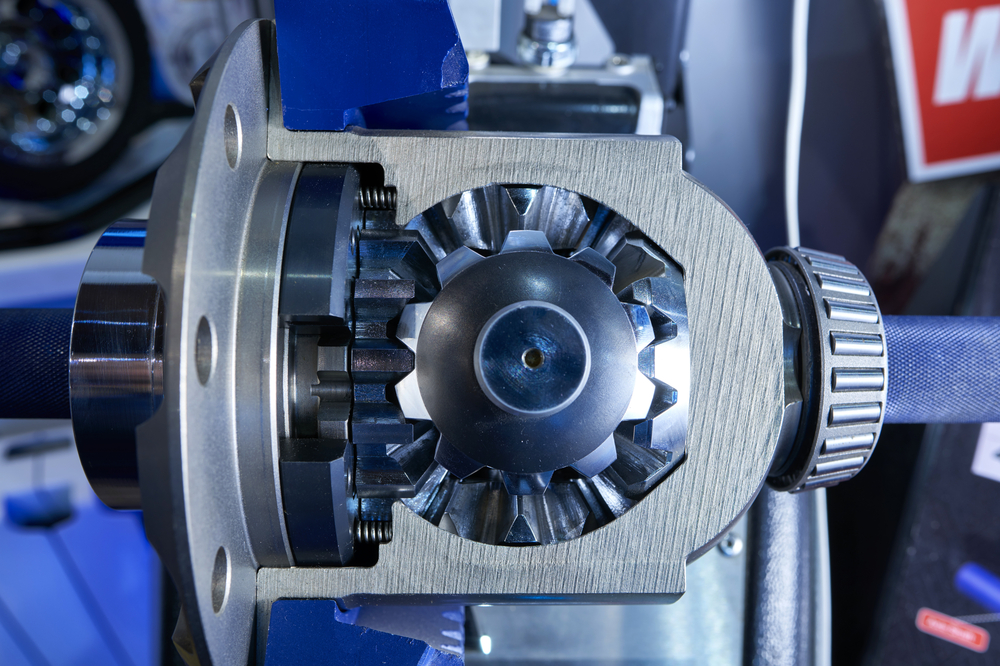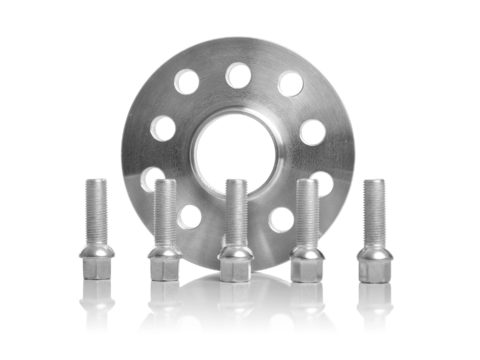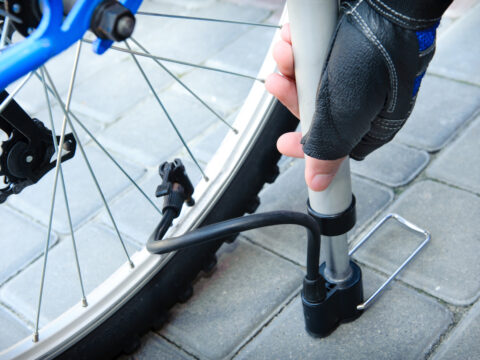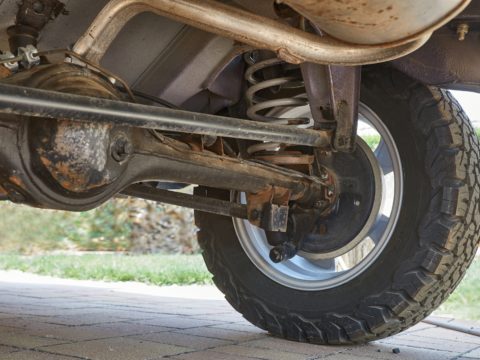When determining the best rear-end differential, you’ll likely be debating between Detroid Locker and Truetac. Each of these products has its own unique features and applications, but which one is better suited to your needs?
Let’s examine the pros and cons of both Detroit Locker and Truetac to help you decide.

Contents
What Is a Detroit Locker Used For?
The Detroit Locker, or the “No Spin” differential, is an automatic locking differential designed to provide maximum traction in off-road and high-performance applications. Car buffs celebrate the Detroit Locker for its capacity to give 100% power to both wheels while permitting them to spin at varying speeds when needed.
This unique feature makes it perfect for use in various situations, such as:
- Off-roading adventures
- Drag racing events
- Rally driving competitions
- Mud-bogging and rock-crawling activities
The Detroit Locker is an aftermarket differential device that allows a vehicle to have greater traction and performance in off-road conditions. It provides increased torque delivery by locking the two side gears together when needed, allowing both wheels on an axle to rotate at the same speed.
What Does a Truetrac Diff Do?
A Truetrac differential, also known as a helical gear limited-slip differential, is designed to provide improved traction and smoother operation compared to traditional differentials. It transfers torque from the wheel with less grip to the one with more grip, ensuring better control and stability in various road conditions.
The Truetrac provides superior traction compared to open differentials by sending more power to the wheel with a better grip when needed. A Truetrac differential offers improved traction and smoother operation than traditional limited-slip differentials. Its gear-based design makes it durable and versatile for various applications while requiring minimal maintenance, making it an excellent choice for those seeking enhanced handling capabilities.
How Detroit Locker and Truetrac Diffs Work
Both the Detroit Locker and Truetrac are popular limited-slip differentials used in various automotive applications, but they operate differently to provide traction and power distribution to the wheels.
The Detroit Locker is a fully automatic locking differential that always provides 100% torque transfer to both drive wheels. It uses a series of gears, springs, and couplers that lock together under load or acceleration, ensuring maximum traction for your vehicle. When turning corners or navigating uneven terrain, the Detroit Locker disengages one wheel momentarily, allowing smooth cornering while maintaining an optimal grip on slippery surfaces.
The Truetrac differential uses helical gears instead of clutches or friction plates found in traditional limited-slip differentials (LSD). These gears mesh together with minimal resistance during normal driving conditions providing seamless power delivery between the two drive wheels.
This operation ensures smoother engagement compared to the Detroit Locker, making it more suitable for daily driving and street use.

Similarities
While Detroit Locker and Truetac have different working mechanisms, some key similarities exist.
Designed for Limited Slip Differentials (LSD)
Both Detroit Lockers and Truetracs are designed as upgrades for limited slip differentials (LSD) and to improve traction in low-grip conditions like off-roading or drag racing by providing a more balanced torque distribution between the wheels.
Manufactured by Eaton Corporation
Eaton Corporation is a well-known manufacturer of automotive components, including both the Detroit Locker and Truetrac differential systems. As part of Eaton’s Performance Products division, these two products benefit from the company’s extensive research and development resources, ensuring high-quality performance across various applications.
Compatibility with Various Vehicles
Detroit Lockers and Truetracs can be installed in various vehicles, from classic muscle cars to modern trucks or SUVs. Both systems offer multiple fitment options based on axle type, gear ratio preferences, or specific driving requirements like towing capacity or off-road use.
Improved Traction Capabilities
Known for its aggressive locking action, the Detroit Locker provides maximum traction by mechanically locking both wheels together when torque is applied. This feature ensures that power is evenly distributed to both tires, allowing them to maintain grip even in challenging conditions.
The Truetrac uses a gear-based system that automatically adjusts torque distribution between the wheels based on available traction. While not as aggressive as the Detroit Locker, it still offers improved performance over standard LSDs and can help prevent wheel spin during acceleration or cornering.
Main Differences
While the Detroit Locker and Truetrac are designed to improve traction, they have some key differences in functionality, overall performance, and working mechanism.
Functionality
The Detroit Locker is an automatic locking differential that provides full lockup when torque is applied to either wheel. This feature ensures maximum traction but can lead to aggressive engagement and disengagement on street-driven vehicles.
Truetrac is a helical gear limited-slip differential that smoothly transfers power between wheels based on available traction without any abrupt locking or unlocking action, making it suitable for daily driving conditions.
Overall Performance
In off-road situations where maximum traction is required, the Detroit Locker offers superior grip due to its fully locked state under load. However, this can also result in harsher handling characteristics during normal driving conditions compared to the smoother operation of a Truetrac differential. The Truetrac delivers improved cornering stability and predictable handling while providing adequate traction for most off-roading applications.
Working Mechanism
The Detroit Locker uses a mechanically actuated dog clutch system which locks both axle shafts together when torque is applied. The Truetrac employs helical gears that mesh with each other as torque is applied, transferring power to the wheel with more traction. This gear-based design results in a smoother and quieter operation than the Detroit Locker’s locking mechanism.
Noise and Drivability
Due to its aggressive engagement and disengagement, the Detroit Locker can produce noticeable noise during street driving, particularly when cornering or changing speeds rapidly. The Truetrac differential operates much more quietly due to its helical gear design.
Compatibility With ABS and Electronic Stability Control Systems
The Truetrac’s smooth operation makes it compatible with modern vehicles equipped with anti-lock braking systems (ABS) and electronic stability control (ESC). In contrast, the sudden lockup behavior of a Detroit Locker may interfere with these safety features, making it less suitable for some applications.
Price Difference
Detroit Lockers tend to be slightly more expensive than Truetracs due to their heavy-duty construction designed for extreme off-road use. However, prices may vary depending on factors such as vehicle make/model compatibility and specific product options available from each manufacturer.
Pros and Cons Summary
Let’s summarize the pros and cons of the Detroit Locker and Truetrac differentials.
| Detroit Locker | Truetrac | ||
| Pros | Cons | Pros | Cons |
| Full traction capabilities | Noisy operation | Quiet operation due to helical design | Less aggressive traction capabilities |
| Rugged design and ability to withstand high torque | Automatic torque locker | Gears provide better traction | Limited torque transfer capability |
| Suitable for off-road use | Less convenient for daily driving | Convenient for daily driving | Not ideal for off-road use |
So, Which One Should You Choose?
Deciding between a Detroit Locker and a Truetrac differential depends on your specific needs and driving preferences. By considering factors such as driving conditions, noise levels, comfort, installation requirements, and maintenance costs, you can make an informed decision that best suits your vehicle’s performance goals.














